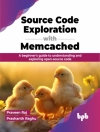This edited book explores the many interesting questions that lie at the intersection between AI and HCI. It covers a comprehensive set of perspectives, methods and projects that present the challenges and opportunities that modern AI methods bring to HCI researchers and practitioners. The chapters take a clear departure from traditional HCI methods and leverage data-driven and deep learning methods to tackle HCI problems that were previously challenging or impossible to address.
It starts with addressing classic HCI topics, including human behaviour modeling and input, and then dedicates a section to data and tools, two technical pillars of modern AI methods. These chapters exemplify how state-of-the-art deep learning methods infuse new directions and allow researchers to tackle long standing and newly emerging HCI problems alike.Artificial Intelligence for Human Computer Interaction: A Modern Approach concludes with a section on Specific Domains which covers a set of emerging HCI areas where modern AI methods start to show real impact, such as personalized medical, design, and UI automation.
สารบัญ
Introduction.- Part 1: Modeling.- Human performance modeling with deep learning.- Optimal control to support high-level user goals in human-computer interaction.-Modeling UI tappability using deep learning and crowdsourcing.- Part 2: Input.- Eye gaze estimation and its applications.- AI-driven intelligent text correction techniques for mobile text entry.- Deep touch: Sensing press gestures from touch image sequences.- Deep learning-based hand posture recognition for pen interaction enhancement.- Part 3: Data and tools.- An early Rico retrospective: Three years of uses for a mobile app dataset.- Visual intelligence through human interaction.- ML tools for the web: A way for rapid prototyping and HCI research.- Interactive reinforcement learning for autonomous behavior design.- Part 4: Specific domains.- Sketch-based creativity support tools using deep learning.- Generative link: Data-driven computational models for digital ink.- Bridging natural language and graphical user interfaces.- Demonstration + natural language: Multimodal interfaces for GUI-based interactive task learning agents.- Human-centred AI for medical imaging.- 3D spatial sound individualization with perceptual feedback.












